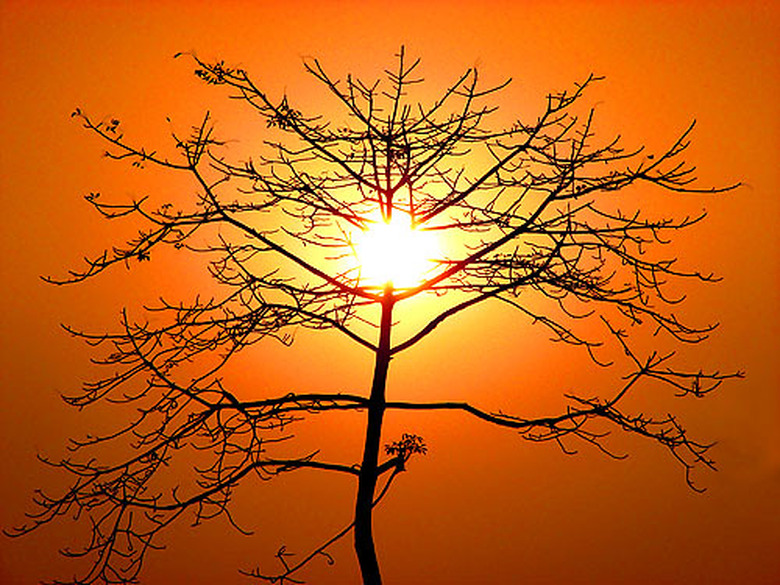What Is The Difference Between Sunlight & Artificial Light For Plants?
Light is composed of units of electromagnetic radiation called photons. The sun radiates these photons in a spectrum that runs from infrared light that we can't see through ranges of light that we can see to invisible ultraviolet light. The quality of light that plants need for photosynthesis varies with the season and the time of day. Plants need different qualities of light for growing and for producing flowers or fruits.
The Basics
A photon is a photon whether it is produced by the sun or by a grow lamp. Growing lights can mimic certain desirable qualities of light necessary for plant growth.
The Quality of Light
Black emits no light. It is the base from which the "color" and "temperature" of light are calculated in surface temperatures recorded in degrees Kelvin (K). This is a measure or way of describing the quality of light.
- Light is composed of units of electromagnetic radiation called photons.
- Plants need different qualities of light for growing and for producing flowers or fruits.
Light for Growing Plants
In the spring and summer growing season in the Northern Hemisphere, plants are closer to the sun and the days are longer. During this time the sun provides "cooler" temperatures and "blue" light. A lit match produces a "warm" color temperature of 1,700 degrees K. On a hot summer day, the sun emits a "cool" light temperature of 6,000 K. Sunlight is warmer and more red in the morning and late afternoons, and cooler and more blue during midday. Growers need blue light to encourage the growth of the stalks and leaves of their plants. Seedlings and clones need blue light.
The sun yields blue light. So does metal halide growing lamps and some fluorescent grow lights.
Light for Fruiting Plants
In the fall, when plants are yielding fruit in the Northern Hemisphere, plants are farther away from the sun and the days are shorter. The temperature of the light is warmer, more red, in the autumn, and the sunlight is less than 5,000 K. High intensity sodium and some light emitting diode and fluorescent growing lights give off lights in the red range. They are as good as the sun for fruiting plants.
Some gardeners with greenhouses use sunlight when their plants are growing and switch to high intensity sodium lights when it comes time for the plants to produce fruit.
- In the spring and summer growing season in the Northern Hemisphere, plants are closer to the sun and the days are longer.
- They are as good as the sun for fruiting plants.
Some gardeners with greenhouses use sunlight when their plants are growing and switch to high intensity sodium lights when it comes time for the plants to produce fruit.
Full Spectrum Light
The sun yields a full spectrum of all the wavelengths of light, from warm to cool. Certain kinds of fluorescent grow lights are called "full spectrum" because they too yield the entire spectrum of light.
